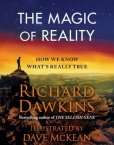 Since my post the other day about the my trigger to amateur astronomy in my youth, a grade-school textbook called A Dipper Full of Stars, I picked up the copy of that book I bought for a few dollars over the internet a few years ago and skimmed through it more than I had recently. It’s basically a guide to constellations, starting with the Big Dipper; from there, the North Star, then other constellations in the area; then other bright stars, like the three in the Summer Triangle, and their constellations, and so on and so on around the sky. With interludes about the planets, the ecliptic, why there are seasons, and so on. A good basic introduction to the fundamentals of what might be called spatial geography – how our planet is situated in space and how to understand what you see in the sky every night.
Since my post the other day about the my trigger to amateur astronomy in my youth, a grade-school textbook called A Dipper Full of Stars, I picked up the copy of that book I bought for a few dollars over the internet a few years ago and skimmed through it more than I had recently. It’s basically a guide to constellations, starting with the Big Dipper; from there, the North Star, then other constellations in the area; then other bright stars, like the three in the Summer Triangle, and their constellations, and so on and so on around the sky. With interludes about the planets, the ecliptic, why there are seasons, and so on. A good basic introduction to the fundamentals of what might be called spatial geography – how our planet is situated in space and how to understand what you see in the sky every night.
What struck me this time were the descriptions of various cultural myths that were applied to the various constellations, or groups of stars other than the constellations our culture currently recognizes. What various Indian tribes said about the stars we call the Big Dipper, what each star represents, what Alcor means in its attendance to Mizar, for example.
Cosmos is doing the same thing, to great effect, notably in this past week’s episode, which described various cultures’ myths about the Pleiades star cluster. And Richard Dawkins’ book The Magic of Reality did this quite well, in a book not just about the heavens and cosmos, but about all sorts of basic questions about reality – what are things made of? What is a rainbow? Who was the first person? Each chapter begins with a variety of ancient myths that attempted to answer such questions, and Dawkins mixes, without any particular emphasis, the myths that survive to our day with all the ones that have been discarded. For example, in the chapter about “Who was the first person?”, he points out that all peoples of the world have origin myths, and then goes on to describe one from the Tasmanian aborigines (a tale involving two rival gods, an absence of knees in the first created humans, and kangaroos); then a similar myth from a neighboring tribe (to suggest how tellings of such stories drift); then a tale from Hebrew tribes, about their single god, about Adam and Eve and the snake, and the resultant concept of ‘original sin’, a story “still taken seriously by many people”; and then a description of the Norse myth involving Odin and two tree trunks who were turned into the first man and woman. (The balance of the chapter is about the scientific answer to the question, which is of course that there was no *single* first person, because humans evolved from earlier species, and there’s never a single clear division between one species and another, and so on.)
What strikes me now about astronomy, at least in its amateur form, and as distinguished from most other branches of science I would think, is that it is imbued and colored by these ancient descriptive myths. (As well as reflecting the history of science in various cultures – at some point any astronomy enthusiast picks up the fact that most of our common star names have Arabic meanings, because during Europe’s Dark Ages (when Christianity ruled and there was no such thing as scientific investigation), it was the Arabs who preserved what astronomical knowledge survived from the Greeks and Romans, later to be passed back to reformed European cultures.)
It doesn’t take much extrapolation to suspect that the myths of one’s own culture are as fragile and ultimately evanescent as all those earlier ones.
P.S. As of this post I will turn on comments, just to see what happens. My experience with the various WordPress blogs that comprise the Locus Online site is that auto-generated spam outnumbers legitimate comments by 100 to 1, and it takes time for me to examine all the comment email to be sure what is spam and to find the very few legitimate comments. We’ll see about this blog.





